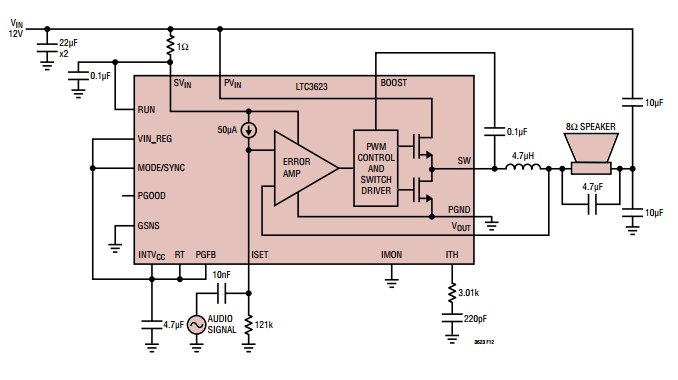Sure thing, Elektor has published several designs of adjustable power supplies based on switching regulators, so we know that doing this properly in a reproducible way and without making things overly complex requires some serious head scratching. The anxiety may be reduced vastly though by a new adjustable synchronous buck regulator which uses a single resistor to set its output voltage anywhere between 0 and 14.5 volts. Using the device is very simple; you can even use it as an audio amplifier.
Linear Technology’s LTC3623 is an adjustable ±5 A high-efficiency, current mode synchronous buck regulator. It uses a 50-µA current reference, combined with a single resistor, to set the output voltage. It allows easy current sharing between multiple regulators, the output voltage of several regulators can all be set with the same resistor, and modulation of the output voltage is very simple too. The datasheet even shows how to use it as a Class-D audio amplifier.
The regulator features an input voltage range of 4 to 15 V; its low RDS(ON) integrated N-channel power MOSFETs and synchronous rectification deliver efficiencies up to 96%. The output voltage is almost rail-to-rail, from 0 V to VIN – 0.5 V. Output regulation and transient response are independent of output voltage. The device’s 400 kHz to 4 MHz switching frequency range enables the use of tiny, low cost capacitors and inductors.

